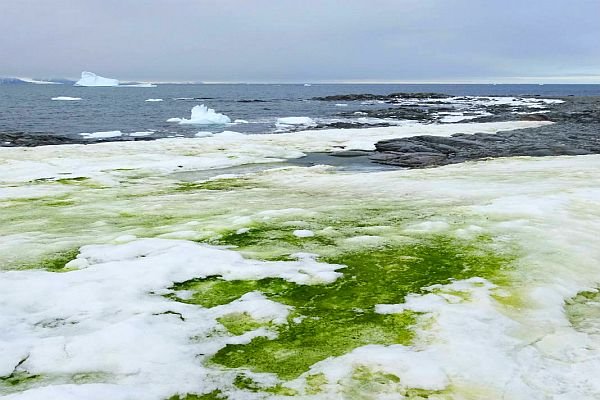A team of biologists from the University of Cambridge have created the first-ever large-scale map of algae blooming across the Antarctica — and turning parts of the continent green.
So green, in fact, that the bright pigments can be seen from space.
Blooms of snow algae in Antarctica were first described by expeditions in the 1950s and 1960s and have since been studied at a few locations in Antarctica, where they have been shown to host a diverse range of algal species and to play key roles in nutrient and carbon cycling.
Warming in the Antarctic Peninsula has already exceeded 1.5 °C over pre-industrial temperatures15, and current Intergovernmental Panel on Climate Change (IPCC) projections indicate further global increases.
Set against a background of natural decadal temperature variability, climatic changes on the Peninsula are already influencing its vegetation.
With the available area for plant colonization on the Peninsula likely to increase by up to threefold due to this warming, understanding how snow algae fit into Antarctica’s biosphere and their probable response to warming is critical to understanding the overall impact of climate change on Antarctica’s vegetation.
More algae could also have a knock-on effect, as darker snow patches absorb more sunlight, but estimates of these effects aren’t available yet, according to the researchers.
The green algae use sunlight to capture carbon dioxide and release oxygen, a process that rapidly increases when excess levels of nitrogen and phosphorous are available.
In future, team is also planing to measure red and orange algae and calculate how the presence of such colourful forms might be affecting the heat-reflecting albedo quality of the snow.
Reference- Nature Communications, The Guardian, New Scientist, Futurism










